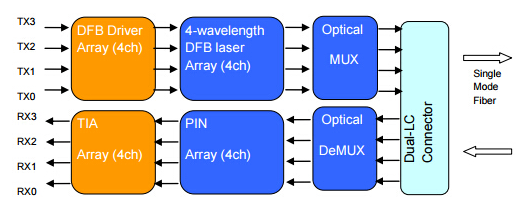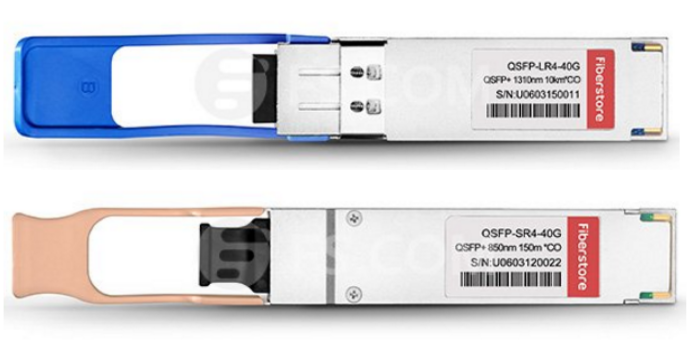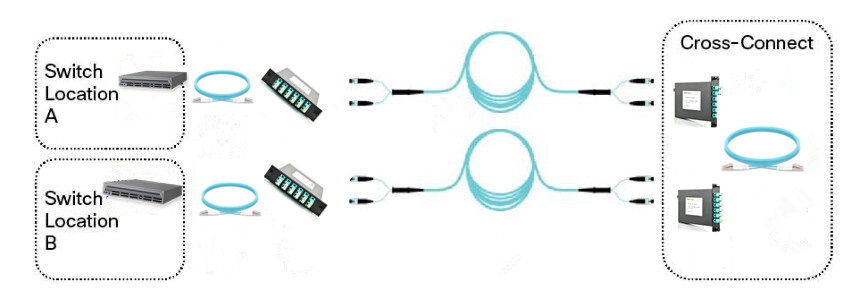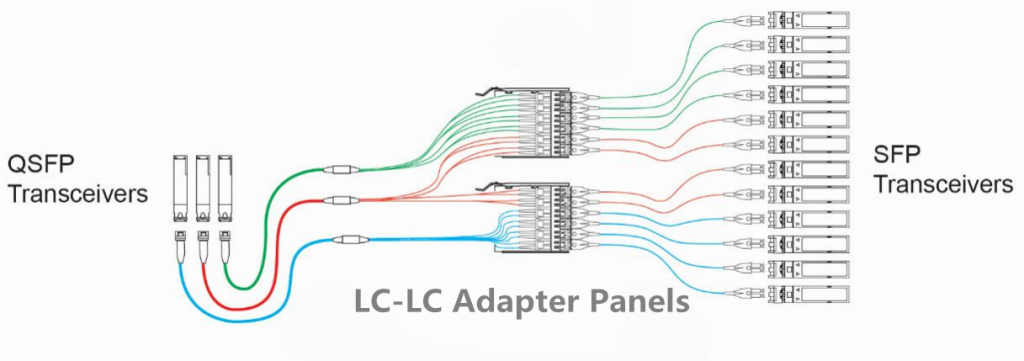It is reported that the data of deploying 40G Ethernet network is still increasing from 4% in 2015 to 7% in next year of 2017, although the deployment performs not so easy as that of 10G Ethernet network. For the sake of higher bandwidth and faster data transmission rate, it seems that the deployment of 40G Ethernet network has been much more necessary than ever before to accommodate the rapid development of network. Are you also interested in deploying 40G Ethernet network that will make better performance for your system? In this paper, it will mainly introduce one of the most widely used QSFP+ transceiver, QSFP-40GE-LR4 for 40G long distance transmission, which plays an important role in deploying 40G smooth migration.
QSFP-40GE-LR4 Transceiver Overview
As one of the most widely used QSFP+ transceiver, QSFP-40GE-LR4 transceiver offers an individual 40GbE links that provides better performance with higher bandwidth in the transmission process, instead of SFP transceivers with multiple 10GbE links. The following figure shows an example of QSFP-40GE-LR4 transceiver for your reference.

It is easy to learn that the letter “L” in its name indicates long distance, the letter “R” means the type of interface with 64B/66B encoding and “4” stands for four channels. That’s to say, QSFP-40GE-LR4 transceiver is able to support 40G Ethernet network for long distance transmission, at lengths up to 10 kilometers, which consists of a standard pair of single-mode fiber and duplex LC connectors. Meanwhile, it has four channels in each direction to transmit and receive signals, each of which has a 10 Gbps data rate to achieve a total 40 Gbps data rate.
Working Principle of QSFP-40GE-LR4 Transceiver
In QSFP-40GE-LR4 transceiver working process, it will firstly convert four inputs channels of 10Gbps electrical signals to four CWDM optical signals, and then multiplexes these four signals into a single channel as a 40Gbps data. Secondly, the data will be propagated out of the transmitter module through single mode fiber and accepted by receiver module. Thirdly, the 40Gbps data will be de-multiplexed into four individual 10Gbps optical signals with different wavelength, and each signal will be transmitted through an individual channel. Finally, these 10Gbps optical signals will be collected by a discrete photo diode, amplified by a TIA, and then outputted as electrical signals.
Compared to 10G SFP transceiver, it is much more complicated in the working process of QSFP-40GE-LR4 transceiver that uses with CWDM technology. To help you better understand its working principle, here offers the whole working process through the following figure that illustrates how QSFP-40GE-LR4 transceivers finish 40G transmission.

Guide for Installing QSFP-40GE-LR4 Transceiver
As an indispensable device for deploying 40G Ethernet network, QSFP-40GE-LR4 transceiver can be installed without powering off the system, which provides much convenience and flexibility. However, there are still some points should be paid attention to in the installation process. Here lists the step-by-step procedure of installing QSFP-40GE-LR4 transceiver that may be helpful for you to achieve a smooth 40G migration.
-
Get QSFP-40GE-LR4 transceiver from the antistatic container.
-
Before installing the transceiver, please remove the dust cover from its connector. Meanwhile, if there is a protective pad covering the card-edge connector, please also remove it.
-
Put the antistatic container, dust cover and protective pad away, so that they can be stored cleanly, and found easily if the transceiver need to be uninstalled.
-
Check and remove the rubber dust cover from the port where the transceiver will be installed.
-
Hold the transceiver by its sides, and then insert it into the port on the switch.
-
Lightly slide the transceiver into the port until it is dropped into place.
-
Push up the handle of the transceiver to secure the transceiver in the switch.
Notice: Please pay attention that QSFP-40GE-LR4 transceiver contains Class 1M lasers and it may cause invisible laser radiation. Hence, when the laser connections are unplugged, you should not stare at it which really does harm to your eyes.
Conclusion
Since 40G Ethernet network has become an irreversible trend to achieve higher bandwidth and ensure better performance, there is no doubt that it will finally take the place of 10G Ethernet network. As one of the most commonly used transceiver for 40G migration, QSFP-40GE-LR4 transceiver would be an ideal solution for 40G long distance transmission.


















